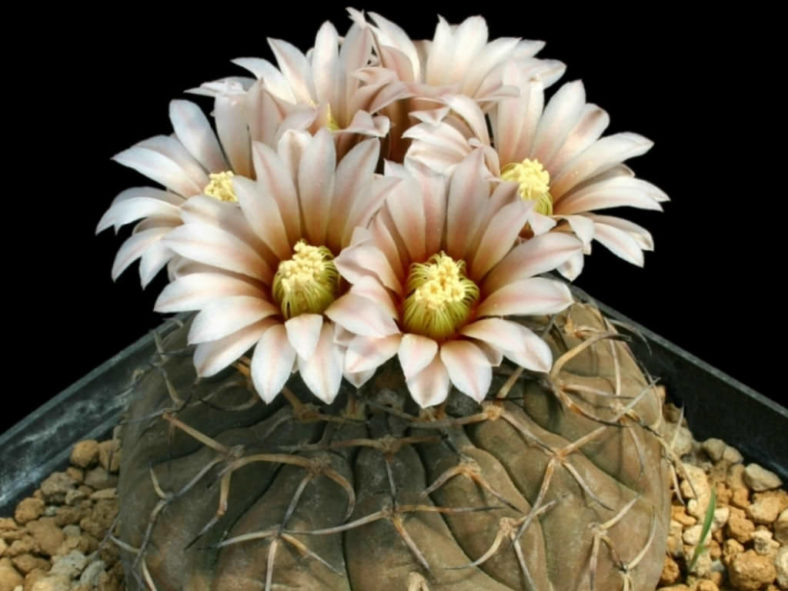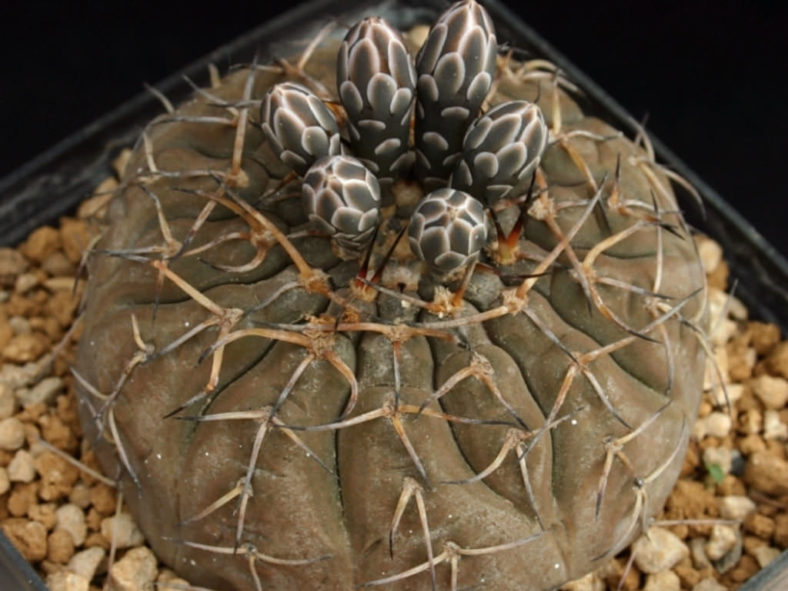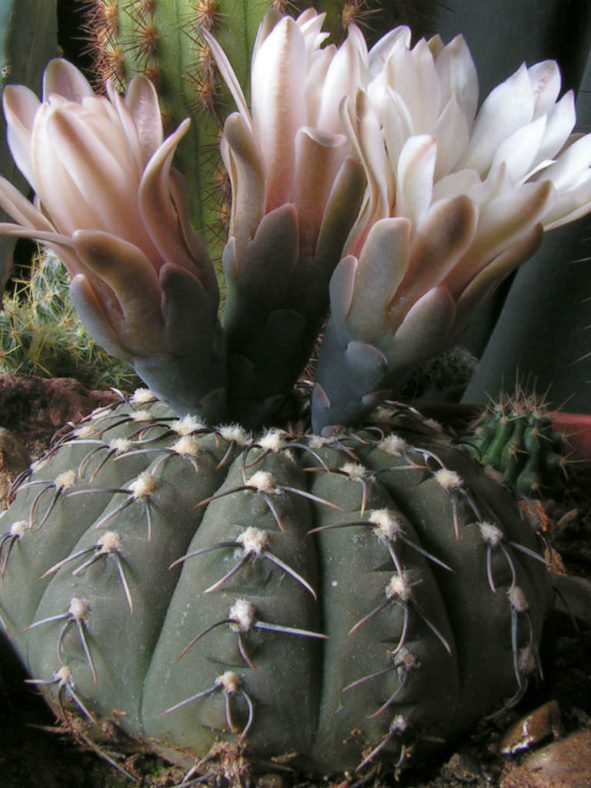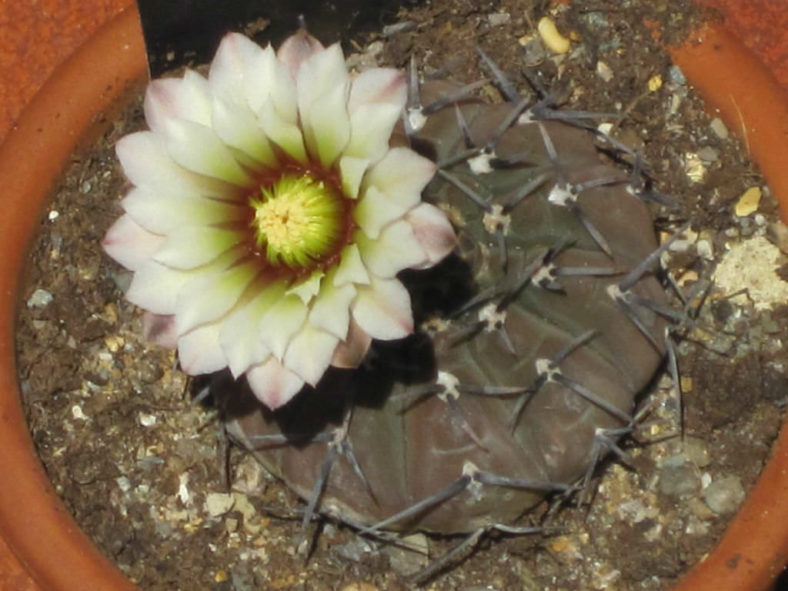Scientific Name
Gymnocalycium stellatum (Speg.) Speg.
Synonym(s)
Gymnocalycium stellatum subsp. stellatum, Gymnocalycium asterium, Gymnocalycium obductum
Scientific Classification
Family: Cactaceae
Subfamily: Cactoideae
Tribe: Trichocereeae
Genus: Gymnocalycium
Description
Gymnocalycium stellatum is a beautiful small cactus with a usually solitary, flattened spherical stem with 7 to 11 ribs lined with clusters of spines. The stem is slow-growing, reaching up to 4 inches (10 cm) in diameter, and can range from dark grayish-brown to olive green. The spines are straight to slightly curved, adpressed towards the stem, initially dark brown, becoming grey with age. Each areole bears 3 to 5 spines.
The flowers are creamy-white with a dull red throat and appear in late spring. They can grow up to 2.6 inches (6.5 cm) long and 1.8 inches (4.5 cm) in diameter.

Hardiness
USDA hardiness zones 9b to 11b: from 25 °F (−3.9 °C) to 50 °F (+10 °C).
How to Grow and Care
Some Gymnocalyciums are shade-seeking in the wild, among shrubs or grasses, while others grow completely exposed. Some will, therefore, need light shading from the sun in the hottest months, but to overdo this will result in the loss of flowers.
The balance of the potting medium should be sufficient to allow good drainage so that the plants do not sit in soggy soil for more than a day or two after watering.
Watering in the summer months, while the plants are growing well, can be frequent (weekly for small plants in small pots), but always allow the compost to nearly dry out before rewatering. Watering in the winter months is unwise and certainly not necessary. The difficult times are spring and autumn.
Those species which produce offsets can be readily propagated by cuttings. Gymnocalycium seed germinates well when fresh and will keep for a few years if stored in cold conditions.
Learn more at How to Grow and Care for Gymnocalycium.
Origin
Gymnocalycium stellatum is native to Argentina.
Links
- Back to genus Gymnocalycium
- Succupedia: Browse succulents by Scientific Name, Common Name, Genus, Family, USDA Hardiness Zone, Origin, or cacti by Genus
Photo Gallery
Click on a photo to see a larger version.


